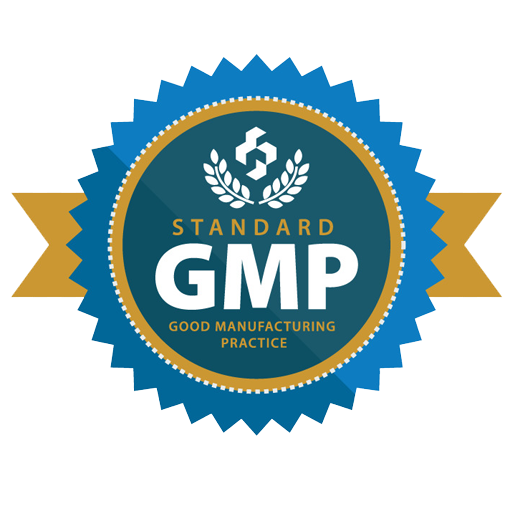Squamous Cell Carcinoma (SCC)
Squamous cell carcinoma (SCC), the second most common form of skin cancer, is an uncontrolled growth of abnormal cells arising from the squamous cells in the epidermis, the skin’s outermost layer. It is sometimes called cutaneous squamous cell carcinoma (CSCC) to differentiate it from very different kinds of SCCs elsewhere in the body. Cutaneous is the scientific word for “related to or affecting the skin.”
SCCs often look like scaly red patches, open sores, warts or elevated growths with a central depression; they may crust or bleed. They can become disfiguring and sometimes deadly if allowed to grow. More than 1 million cases of squamous cell carcinoma are diagnosed each year in the U.S., which translates to about 115 cases diagnosed every hour. Incidence has increased up to 200 percent in the past three decades in the U.S., and more than 15,000 Americans die each year from the disease.
Cumulative, long-term exposure to ultraviolet (UV) radiation from the sun over your lifetime causes most SCCs. Daily year-round sun exposure, intense exposure in the summer months or on sunny vacations and the UV produced by indoor tanning devices all add to the damage that can lead to SCC. Experts believe that indoor tanning is contributing to an increase in cases among young women, who tend to use tanning beds more than others do.
SCCs may occur on all areas of the body, including the mucous membranes and genitals, but are most common in areas frequently exposed to the sun, such as the rim of the ear, lower lip, face, balding scalp, neck, hands, arms and legs. The skin in these areas often reveals telltale signs of sun damage, including wrinkles, pigment changes, freckles, “age spots,” loss of elasticity and broken blood vessels.
Warning
What to look for
Squamous cell carcinomas typically appear as persistent, thick, rough, scaly patches that may bleed. They often look like warts and sometimes have open sores with a raised border and crusted surface over an elevated pebbly base. The skin around them typically shows signs of sun damage such as wrinkling, pigment changes and loss of elasticity.
In addition to the signs of SCC shown here, any change in a preexisting skin growth, such as an open sore that fails to heal, or the development of a new growth, should prompt an immediate visit to a physician.
Causes and Risk Factors
who gets it
People who have fair skin, blond or red hair, and blue, green or gray eyes are at increased risk of developing the disease. But so is anyone with a history of substantial sun exposure. Those whose occupations require long hours outdoors or who spend extensive leisure or recreation time in the sun (especially playing golf or other sports) are in particular jeopardy. Anyone who has had basal cell carcinoma is also more likely to develop SCC.
Squamous cell carcinomas are at least twice as frequent in men as in women, partly because of more time spent in the sun. Most SCCs appear in people over age 50, but in recent years more and more young people in their 20s and 30s are being diagnosed with the disease. The number of women under age 40 diagnosed with SCC has especially increased in the last 30 years, and many experts attribute this to their greater use of indoor tanning. More than 419,000 cases of skin cancer in the U.S. each year are linked to indoor tanning, about 168,000 of them squamous cell carcinomas, and over 70 percent of tanning salon patrons are female.
The majority of skin cancers in African Americans are squamous cell carcinomas, usually arising on the sites of preexisting inflammatory skin conditions or burn injuries. While people who have dark skin tones are less likely to get skin cancer than people who have light skin tones, it is still essential for them to practice sun protection. All skin types are at risk of skin cancer. Recently, there has been a large increase in new SCCs diagnosed in Latinos and other people of color.
While cumulative exposure to sunlight causes most cases of squamous cell carcinoma, frequent use of indoor tanning also multiplies the risk of SCC; people who have ever used indoor tanning have a 67 percent increased risk of developing SCC compared with those who haven’t. Skin injuries are another important source. The cancer can arise in burns, scars, ulcers, long-standing sores and sites previously exposed to X-rays or certain chemicals (such as arsenic and petroleum by-products).
People with a UV-sensitive condition such as xeroderma pigmentosum, which makes them more prone to sun damage, are more vulnerable to the disease. So are those with reduced immune system functioning due to a medical condition such as HIV or to certain medical treatments such as chemotherapy or antirejection drugs used after transplant surgery. Organ transplant patients are approximately 100 times more likely than the general public to develop squamous cell carcinoma.
Chronic infections and skin inflammation can also give rise to squamous cell carcinoma. Even excessive sun exposure weakens the immune system, making it harder to fight off disease and thus increasing the risk of developing squamous cell carcinoma and other skin cancers. Occasionally, squamous cell carcinomas arise spontaneously on what appears to be normal, healthy skin. Some researchers believe the tendency to develop these cancers can be inherited.
Precancers that Can Lead to SSC
Certain precancerous growths, most of them resulting from cumulative sun damage, can be associated with the later development of cutaneous squamous cell carcinoma (CSCC).
Actinic Keratosis
These rough, scaly, slightly raised growths, also known as solar keratoses, are found on sun-exposed areas of the body, most often in older people. They can range in color from brown to red and from about 1 mm to 1 inch in diameter. From 2 to 10 percent of untreated actinic keratoses (AKs) advance to SCC, sometimes within two years, according to different studies. Indeed, 40 to 60 percent of SCCs begin as untreated actinic keratoses. The more AKs that go untreated and the older these lesions are, the greater the chance that one or more may develop into invasive SCC.
AKs are often palpable before becoming visible. You can feel them by running your fingers over sun-exposed areas. The rough texture that feels different from surrounding healthy skin can provide an early sign of their development.
Actinic Cheilitis
This form of actinic keratosis occurs most often on the lower lip, causing it to become dry, cracked, scaly and pale or white. Why the lower lip? Because it receives more sun exposure than the upper lip. If not treated promptly, actinic cheilitis can lead to squamous cell carcinoma on the lip. If your lips are frequently chapped or burning, you may have actinic cheilitis.
Leuloplakia
Arising in the mucous membranes, these white patches on the tongue, gums, cheeks or elsewhere inside the mouth have the potential to develop into squamous cell carcinoma. They may be caused by sources of chronic irritation, such as habitual alcohol consumption or tobacco use, or rough edges on teeth or dentures. They may even be caused by a longtime habit of biting the inside of the lip; however, leukoplakias on the lips are mainly caused by sun damage.
Bowen's Disease
This is now generally considered an early, noninvasive (in situ) stage of squamous cell carcinoma. It appears as a persistent red-brown, scaly patch that may resemble psoriasis or eczema. If untreated, it may invade deeper structures. Bowen’s disease is most often caused by exposure to the sun or to arsenic, but radiation and other chemical carcinogens, genetics and trauma also may play a role. The human papillomavirus (HPV), highly transmissible through sexual contact, has been documented as a cause of one form of Bowen’s disease affecting the genitals. HPV can also arise in the mucous membranes of the nose and mouth as well as on the skin.
Treatment Options
If caught early, most squamous cell carcinomas are curable and cause minimal damage. However, the larger and deeper a tumor grows, the more dangerous and potentially disfiguring it may become, and the more extensive the treatment must be.
If left untreated, SCCs may spread (metastasize) to local lymph nodes, distant tissues and organs and can become life-threatening. Therefore, any suspicious growth should be seen by a physician without delay. The doctor takes a tissue sample (biopsy), which is examined under a microscope to arrive at a diagnosis. If tumor cells are present, the physician uses the biopsy results and other factors to determine which treatment is right for you.
Fortunately, there are several effective ways to eradicate squamous cell carcinoma. The physician chooses the treatment based on the tumor’s type, size, location and depth of penetration, as well as the patient's age and general health
The patient can almost always receive treatment on an outpatient basis in a physician's office or at a clinic. Most surgical procedures call for a local anesthetic, and pain or discomfort is usually minimal during and after the procedure.
Surgical Procedures
Mohs Surgery
Mohs surgery is the gold standard for treating many SCCs (as well as many basal cell carcinomas and some melanomas). This includes those in cosmetically and functionally important areas around the eyes, nose, lips, ears, scalp, fingers, toes or genitals. Mohs is also recommended for skin cancers that are large, aggressive or growing rapidly, that have indistinct edges or that have recurred after previous treatment. Learn more about Mohs surgery and find out if it’s right for you.
Excisional Surgery
The physician uses a scalpel to remove, or excise, the entire cancerous tumor along with a surrounding border of presumably normal skin as a safety margin. The physician bandages the wound or closes the skin with stitches and sends the tissue specimen to a lab to verify that all cancerous cells have been removed. If the lab finds evidence of skin cancer beyond the safety margin, the patient may need to return for another surgery. For tumors discovered at an early stage that have not spread beyond the tumor margin, excisional surgery is frequently the only treatment required
Excisional surgery can be used for squamous cell carcinomas as well as basal cell carcinomas and melanomas. For tumors discovered at an early stage that have not spread beyond the tumor margin, excisional surgery is frequently the only treatment required.
Curettage and Electrodesiccation (Electrosurgery)
This technique is usually reserved for small squamous cell carcinoma lesions. Using local anesthesia, the physician scrapes off part or all of the lesion with a curette (an instrument with a sharp, ring-shaped tip), then burns the tumor site with an electrocautery needle to stop the bleeding and kill any remaining cancer cells. The physician typically repeats this procedure a few times (often at the same session), scraping and burning a deeper layer of tissue each time to help ensure that no tumor cells remain. The technique can produce cure rates approaching those of surgical excision for superficially invasive squamous cell carcinomas without high-risk characteristics. However, it is not recommended for any invasive or aggressive SCCs, those in high-risk or difficult sites, such as the eyelids, genitalia, lips and ears, or any other sites (especially those around the face) that would be left with cosmetically undesirable results, since the procedure leaves a sizable, hypopigmented scar.
Cryosurgery
This procedure is used for superficial SCCs. The physician destroys the tumor tissue by freezing it with liquid nitrogen, using a cotton-tipped applicator or spray device. Later, the lesion and surrounding frozen skin may blister or become crusted and fall off, usually within weeks. There is no cutting or bleeding, and no anesthesia is required, though the patient may experience some mild stinging. The physician may repeat the procedure several times at the same session to help ensure destruction of all malignant cells. Redness, swelling, blistering and crusting can occur following treatment, and in dark-skinned patients, some pigment may be lost. Inexpensive and easy to administer, cryosurgery may be the treatment of choice for patients with bleeding disorders or intolerance to anesthesia. However, it has a lower overall cure rate than the surgical methods. Depending on the physician's expertise, the five-year cure rate can be quite high with selected, superficial squamous cell carcinoma; but cryosurgery is not often used today for invasive SCC because it may miss deeper portions of the tumor and because scar tissue at the cryotherapy site might obscure a recurrence.
Laser Surgery
Laser therapy is not yet approved for SCC but is sometimes used for superficial SCCs, above all when other techniques have been unsuccessful. It gives the physician good control over the depth of tissue removed. The physician uses a beam of light of a specific wavelength to destroy certain superficial SCCs, without causing bleeding. The physician may remove the skin’s outer layer and/or variable amounts of deeper skin, so local anesthesia may be needed. The risks of scarring and pigment loss are slightly greater than with other techniques.
Some lasers (such as CO2 lasers) vaporize (ablate) the skin cancer, while others (nonablative lasers) convert the beam of light to heat, which destroys the tumor.
Radiation therapy
The physician uses low-energy X-ray beams to destroy the tumor, with no need for cutting or anesthesia. Destruction of the tumor may require several treatments over a few weeks or daily treatment for a month. Average cure rates are about 90 percent, since the technique does not provide precise control in identifying and removing residual cancer cells at the margins of the tumor. The technique can involve long-term cosmetic problems and radiation risks, as well as multiple visits. For these reasons, though this therapy limits damage to adjacent tissue, it is mainly used for tumors that are hard to treat surgically, as well as patients for whom surgery is not advised, such as the elderly or those in poor health. In some more advanced cases of SCC, radiation may be needed after surgery, sometimes combined with other treatments.
Photodynamic Therapy (PDT)
PDT may be used for some superficial SCCs on the face and scalp but is not recommended for invasive SCC. The physician applies a light-sensitizing topical agent to the lesion and the area surrounding it. The patient waits for an hour or more to let this absorb into the skin. The doctor then uses a strong blue or red light or laser to activate this medicated area. This selectively destroys the lesion while causing minimal damage to surrounding healthy tissue. Some redness, pain, peeling, flaking and swelling can result. After the procedure, patients must strictly avoid sunlight for at least 48 hours, as ultraviolet exposure will increase activation of the medication and may cause severe sunburns.
Topical Medications
5-fluorouracil (5-FU) and imiquimod, both FDA-approved for treatment of actinic keratoses and superficial basal cell carcinomas, are also sometimes used off-label (without FDA approval) for superficial squamous cell carcinoma. However, they should not be used for the treatment of invasive SCCs. Imiquimod stimulates the immune system to produce interferon, a chemical that attacks cancerous and precancerous cells, while 5-FU is a topical form of chemotherapy that has a direct toxic effect on cancerous cells.
Treatments for Recurrent and Advanced Squamous Cell Carcinoma
Squamous cell carcinomas usually remain confined to the epidermis (the top skin layer) for some time. However, the larger these tumors grow, the more extensive the treatment needed. They eventually penetrate the underlying tissues, which can lead to major disfigurement, sometimes even the loss of a nose, eye or ear, and they sometimes result in nerve or muscle injury.
“Advanced” is a broad term for SCCs that may have spread extensively or have resisted multiple treatments and recurred. These include locally advanced SCCs — primary tumors that are very large, or have burrowed down into nearby subcutaneous tissue, muscles or along nerves — as well as tumors that have metastasized to the nearby lymph nodes or other parts of the body. About 50,000 cases a year, or about 1 out of every 20 cases, either become locally advanced or spread (metastasize) to distant tissues and organs. When this happens, SCCs can become life-threatening.
Metastases most often arise on sites of chronic inflammatory skin conditions and on the ear, nose and lip.
For SCCs that recur, become locally advanced or metastasize, the doctor may use a combination of treatments, including surgery, radiation and immunotherapy. First, however, he or she may recommend an evaluation by a multidisciplinary team of specialists. The team, which may include your dermatologist or Mohs surgeon, plus additional physicians and surgeons from other specialties, can discuss the various treatment options that could be considered, including participation in a clinical trial.
In September of 2018, the FDA approved a new intravenously infused drug called cemiplimab-rwlc (Libtayo®) as a treatment for patients with metastatic SCC — specifically squamous cell carcinoma of the skin, or cutaneous SCC (CSCC) — and those with locally advanced, unresectable CSCC who are not candidates for curative surgery or radiation. Cemiplimab-rwlc is the first and only treatment specifically approved for advanced CSCC in the U.S. Harnessing the power of the immune system to battle the cancer, it is known as a checkpoint blockade immunotherapy. By blocking a receptor called PD-1 (programmed death-1), which normally keeps the immune system in check, cemiplimab-rwlc allows the immune system’s T cells to attack the tumor in force.
Cemiplimab-rwlc was approved based on the combined data from a multicenter phase 2 study and a multicenter phase 1 study, which found that out of a combined 108 patients, more than 47 percent responded to the drug, with 4 percent experiencing a complete response (complete remission). Some patients who had failed other therapies had CRs, including one patient with metastases to the brain. Only three responders went on to progressive disease.
If you have advanced CSCC, it’s important to stay up to date on clinical trial developments with your doctor or team, and stay optimistic.
Recurrence, Prevention and Early Detection
Anyone who has had one squamous cell carcinoma has an increased chance of developing another, especially in the same skin area or nearby. That is usually because the skin has already suffered irreversible sun damage. Such recurrences typically occur within the first two years after surgery. A squamous cell carcinoma can recur even when it has been carefully removed the first time.
Thus, it is crucial to pay particular attention to any previously treated site, and any changes noted should be shown immediately to a physician. SCCs on the nose, ears and lips are especially prone to recurrence. Even if no suspicious signs are noticed, regularly scheduled follow-up visits, including total-body skin exams, are an essential part of posttreatment care. Should the cancer return, the physician may recommend a different type of treatment the next time. Certain methods, such as Mohs micrographic surgery, can be highly effective for preventing and treating recurrences.
While squamous cell carcinomas and other skin cancers are almost always curable when detected and treated early, it is best to prevent them in the first place. Practice as many of these safety habits as you can as part of your daily health care routine, all year round and at every age:
• Seek the shade, especially between 10 AM and 4 PM.
• Don’t get sunburned.
• Avoid tanning and never use UV tanning beds.
• Cover up with clothing, including a broad-brimmed hat and UV-blocking sunglasses
• Use a broad spectrum (UVA/UVB) sunscreen with an SPF of 15 or higher every day. For extended outdoor activity, use a water-resistant, broad spectrum (UVA/UVB) sunscreen with an SPF of 30 or higher.
• Apply 1 ounce (2 tablespoons) of sunscreen to your entire body 30 minutes before going outside. Reapply every two hours or after swimming or excessive sweating.
• Keep newborns out of the sun. Sunscreens should be used on babies over the age of six months.
• Examine your skin head-to-toe every month.
• See a dermatologist at least once a year for a professional skin exam.
Click here for Download pdf of patient informationClick here for Download pdf of prescribing information
Our Awesome Features
Taj Pharma is one of the largest generic pharmaceutical company in India. We hold top positions in different established markets worldwide and are building a strong presence in many emerging generics markets. You can contact Taj Pharma India's business by telephone on 91 022-2637-4592, if you have an enquiry about the company, our healthcare business, or one of our medicines.
Product Summary
Bleomycin is used to treat cancer. It works by slowing or stopping the growth of cancer cells. It Used in the treatment of squamous cell cancers, melanoma, sarcoma, testicular and ovarian cancer.
About Taj Pharma
Welcome to the Taj Pharmaceuticals Limited India site. We would like to give you an overview of Taj Pharmaceuticals Limited in India: our background, organization, products, core belief and prospects.
Patient Care
Bleomycin solution for injection use, safety information, warnings and side effects, indications and usage, Interactions, dosage, patient information, adverse reactions and clinical pharmacology.
Customer Care Service
1800-222-434 or
1800-222-825.
Frequently Asked Question
This section displays common question about Bleomycin Injection.
Contact Taj Pharma
214, Bake House, Bake House Lane,
Fort, Mumbai 400001, India
Bleomycin Injection Image Gallery
Bleomycin is used to treat cancer. It works by slowing or stopping the growth of cancer cells. This medication may also be used to control the build-up of fluid around the lungs (pleural effusion) caused by tumors that have spread to the lungs.
Bleomycin Solution For Injection
How to use Bleomycin / Drug Interactions
Know more Bleomycin Solution for Injection
Dosing & Uses
Dosage Forms & Strengths powder for injection 15unit 30unit Squamous Cell Carcinoma 0.25-0.5 unit/kg (10 to 20 unit/m²) IV/IM/SC q1-2Weeks
Read MoreAdverse Effects
>10% Mucocutaneous toxicity including rash, erythema, hyperpigmentation, urticaria (>50%) Febrile reactions, acute (25-50%)
Read MoreWarning
Use cautioin in renal impairment Hepatic toxicity reported Use caution when administering oxygen during surgery(increases risk of pulmonary toxicity)
Read MorePharmacology
Mechanism of Action Glycopeptide antibiotic; inhibits DNA, RNA, protein synthesis in G2, M phases Pharmacokinetics Half-Life: 2 hr
Read MoreFor Free & Detailed solution: Contact our Experts 24/7
Our Partners
A dream for new world Anchored in India and committed to its traditional values of leadership with trust, the Taj Pharma Group is spreading its footprint globally through excellence and innovation.Taj Pahrma







